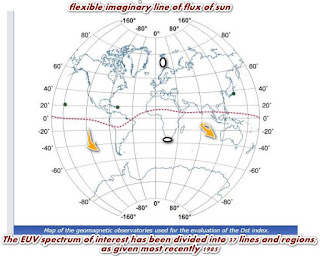Explaining and correcting the excessive wrong variation in the Dst index measurement
We study the seasonal variation of substorms, geomagnetic activity, and solar wind drivers. The number of substorms and substorm mean duration depicts an annual variation with high in Winter and Summer, respectively, reflecting the annual change of the local ionosphere. Spring-fall asymmetry of substorm variation of geomagnetic activity investigated for different conditions of the interplanetary magnetic field during one solar cycle solar minimum years (example) of 1954 and 1996 in the declining phase of the two cycles when high-speed streams dominate the solar wind. The solution to this problem requires a complete reconstruction of the Dst index. The derivation of this reconstructed and extended index, to be called here the Dxt index, closely follows the original recipe for the Dst index [Sugiura, 1969; Sugiura and Kamei, 1991, which encircles the Earth close to the magnetic equator in the Van Allen (or radiation) belt of the magnetosphere. During large magnetic storms, the signature of the ring current can be seen in ground magnetic field recordings worldwide as the so-called main phase depression. After this is accomplished for a worldwide array of low- latitude observatories, the residual variations are transformed to their equatorial equivalent, in a harmonic standing of the Dst index goes below a critical value.
At the present state of development of remote sensing models, it is considered necessary to measure these lines individually, rather than to use some wide bandwidth approach.
Please note: The Dst is a geomagnetic index which monitors the world wide magnetic storm level
However, in a complex simulation such as the one shown here.



Comments
Post a Comment